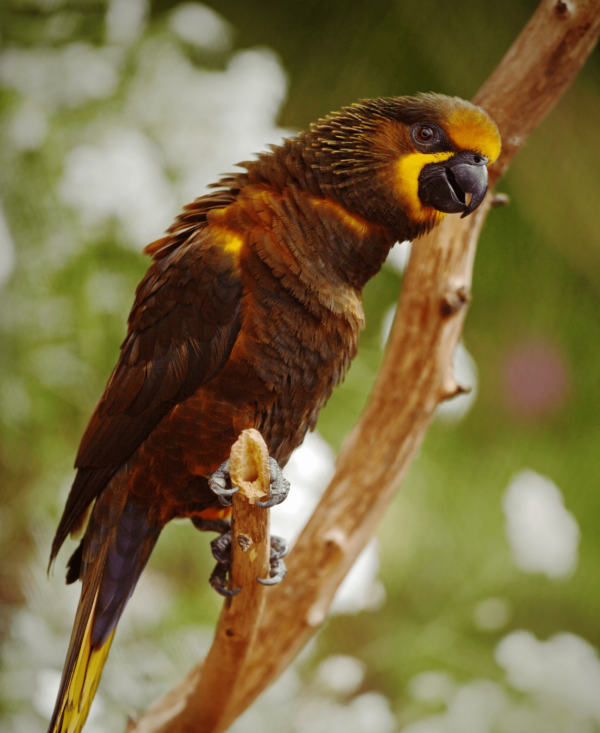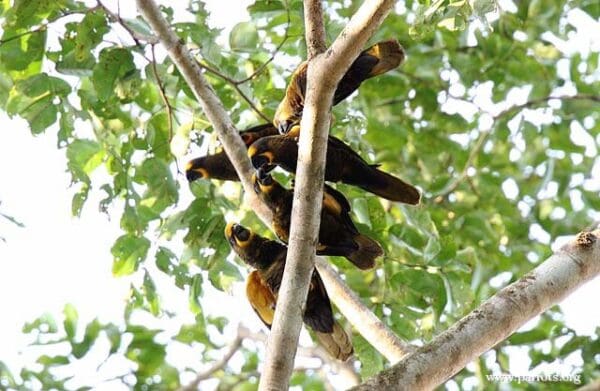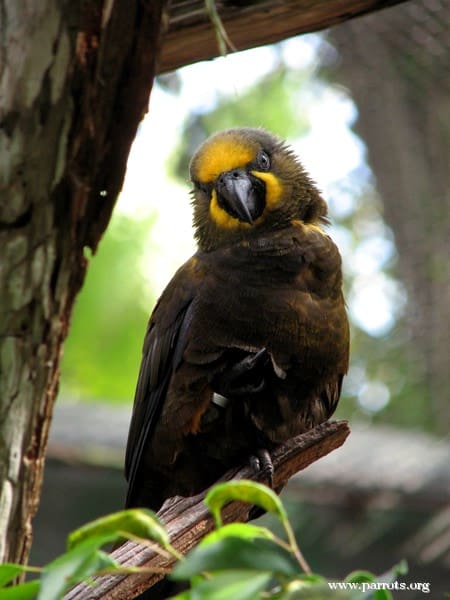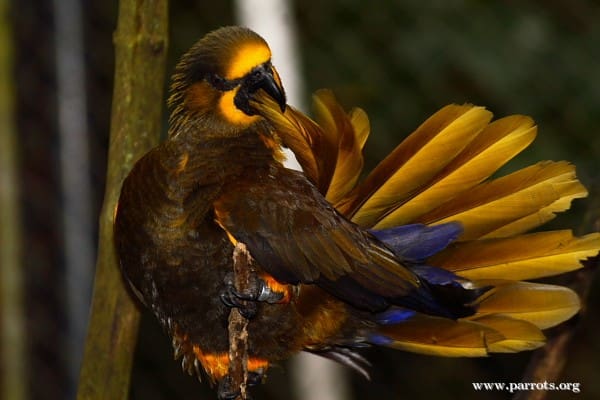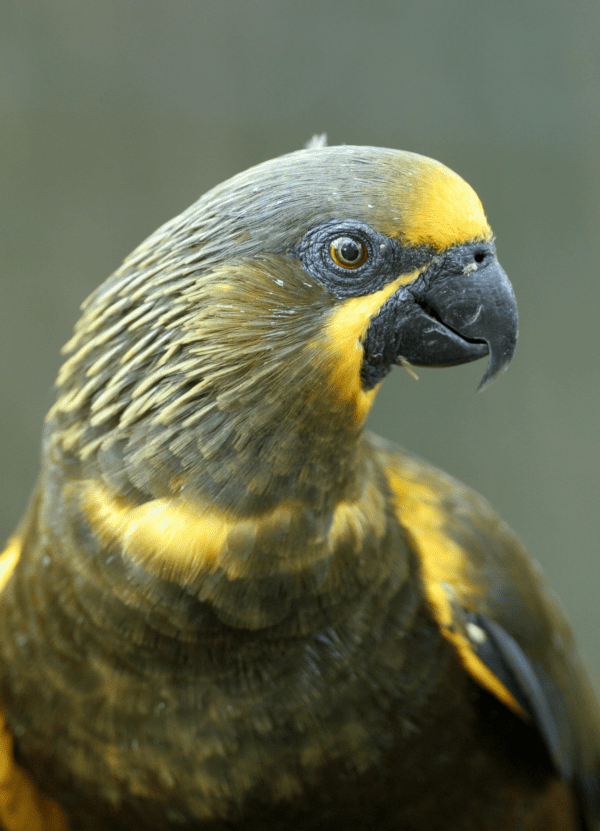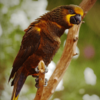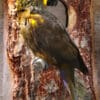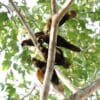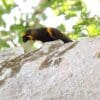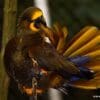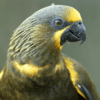Brown Lory
Also known as:
Duivenbode's Lory
Also known as:
Duivenbode's Lory
DID YOU KNOW?
The Brown Lory is one of only two species of parrot that are predominently brown, the other being the Dusky Lory.

Chalcopsitta

duivenbodei
Size:
31 cm (12.1 in)
Weight:
200-230 g (7-8 oz)
Subspecies including nominate:
two: C. d. duivenbodei, C. d. syringanuchalis
Colour Adult:
Dark brown feathers; yellow forecrown, chin, thighs, under-wing converts, innerwebs of primary feathers and bend of wing; also purple rump and black beak. Eye orange/red.
C.d. duivenbodei: Body dark olive/brown, forehead and face yellow; feathers of breast margined yellow, bend of wing, thighs and underwing covers orange/yellow; yellow markings on outer tail feathers in male.
C.d. syringanuchalis: Darker brown head and back; often with purple sheen.
Colour Juvenile:
C.d. duivenbodei: Yellow less bright and less extensive on face and bend of wing; neck feathers brown; white bare skin around eye and lower jaw.
C.d. syringanuchalis: As in adult.
Call:
Harsh, some musical tones, with different hissing and screeching.
More Information:
Content Sources:
CITES
BirdLife International
Cornell Lab of Ornithology/Birds of the World
Parrots: A Guide to Parrots of the World, Juniper and Parr, 1998
Parrots of the World, Forshaw and Cooper, 1977, 1989. 2010 edition
Parrots of the World, Forshaw, 2006.
Lexicon of Parrots, Thomas Arndt.
Parrots in Aviculture, Low, 1992.
Parrots: Their Care and Breeding, Low, 1986.
Captive Status:
Limited number in captivity.
Longevity:
—
Housing:
Aviary with a well drained floor (sloping) or suspended cage over concrete base, size 2 x 1 x 2 m (6.5 x 3.3 x 6.5 ft).
Diet:
Proprietary type (store bought) nectar or a mixture of baby cereal (no lactose), honey, and malt extract or molasses, mixed with bottled water, made fresh once or twice daily; also fresh fruit like apple, pear, orange, banana, cactus fruits and one or more of the following: carrot, corn on the cob, green leaves, rearing food made from hard boiled egg, and wholegrain bread, all ground to a crumbly consistency.
Enrichment:
Hang nectar bottles or cups around aviary, provide browse with edible flowers, various chew (wooden block, vegetable-tanned leather and heat sterilized pine cones) and plastic toys (non-toxic); provide bowls of water for bathing.
Nest Box Size:
L-shaped, up to 9″ (22.8 cm) high, 9″(22.8 cm) wide, 18″(45.7 cm) long and 18″(45.7 cm) deep; entrance hole 3″ (7.6 cm); also provide boxes for them to sleep in year round.
Clutch Size:
2
Fledging Age:
77 days
Hatch Weight:
—
Peak Weight:
—
Weaning Weight:
—
World Population:
>50,000 individuals; reported as uncommon. Decreasing.
IUCN Red List Status:
Least Concern
CITES Listing:
Appendix II
Threat Summary:
A BirdLife “restricted-range” species. Appears to be irregular in numbers; common in some places and rare in others within range. Habitat is threatened by logging.
Range:
C.d. duivenbodei: Found in northern New Guinea.
C.d. syringanuchalis: Geelvink Bay in West Papua to Astolobe Bay in Papua New Guinea.
Habitat:
Open habitats, secondary forests to 200 m (656 ft).
Wild Diet:
Nectar from flowering trees, and fruit.
Ecology and Behaviour:
Gregarious, roosting socially, also seen in pairs in flowering trees. Also seen with Rainbow Lorikeets in mixed flock.
Clutch and Egg Size:
2 eggs, size 34.0 x 25.0 mm (1.3 x 0.9 in)
Breeding Season:
Little is known, but a female in breeding condition reported in April.
Related Links:
—
